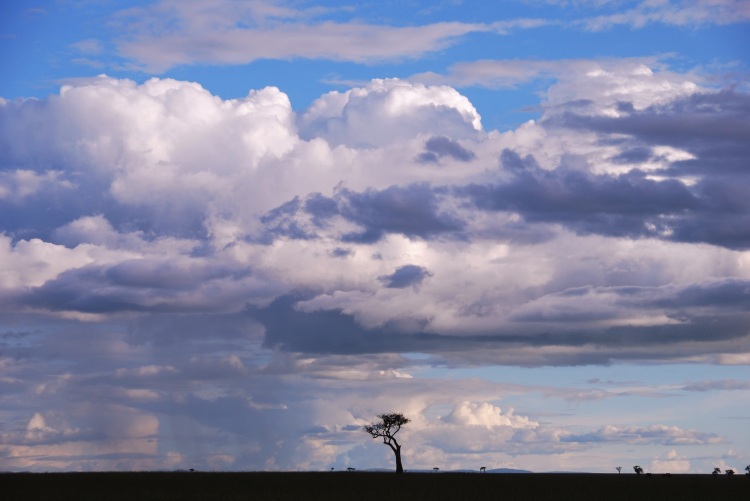
December 24-28, 2015
When extended the opportunity to spend Christmas in the Masai Mara at Sentinel Mara Camp with our good friends (the owners), we called their bluff. We felt that four nights in the Musiara forests would make for an unforgettable holiday and we were right. Our previous trips coincided with the wildebeest migration which translates to a frenzy of activity and a cacophony of noise. The tail end of the short rains (December) makes for a very different game drive experience and feeling. The majority of the plains grazers are gone as they’ve headed south to Tanzania’s Serengeti to calf. The remaining residents are comprised of Thompson gazelles, Grant’s gazelles, topi, Coke’s hartebeest, and waterbuck in probably only one-fifth the density of July/August. Much to my delight, the mara was stunningly quiet. Only the gentle blowing breeze giving a rustle to the long grasses gives away a sense of movement. The rowdiness of the zebra and wildebeest was nowhere.
We arrived in the Mara in time for lunch and unpacked our bags. The camp itself is throwback to the time of Hemingway and Gin & Tonics. It has rustic charm with five-star dining and soft Egyptian cotton sheets.
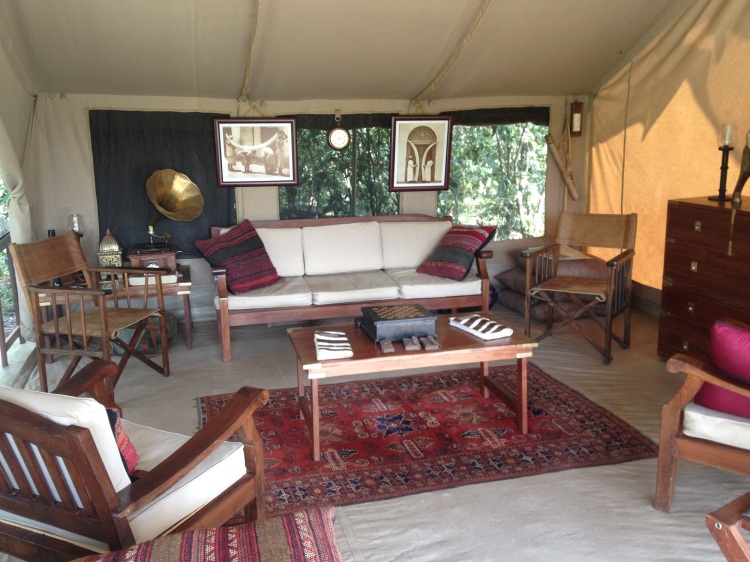

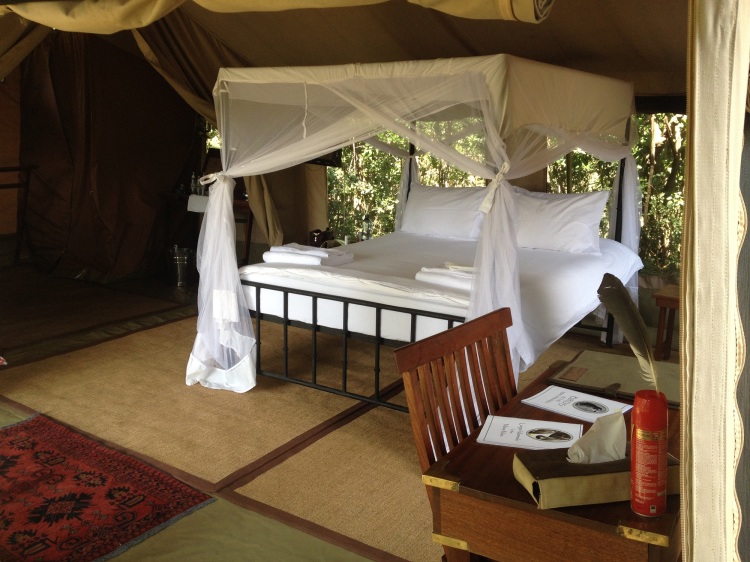
After a brief rest we headed out to find the wildlife. Our Christmas gift came quickly: a black rhino was spotted not more than 30 minutes into our first drive. We slowly eased toward him and watched as he grazed on herbaceous plants before making his way to the forest for the night. There were only four vehicles at the start and by the time the sun was setting, only we remained with this regal, sometimes ornery, and highly endangered animal. However, in this encounter, not once did he become agitated. It was truly a gift to spend so much time peacefully in the presence of such a coveted specimen.

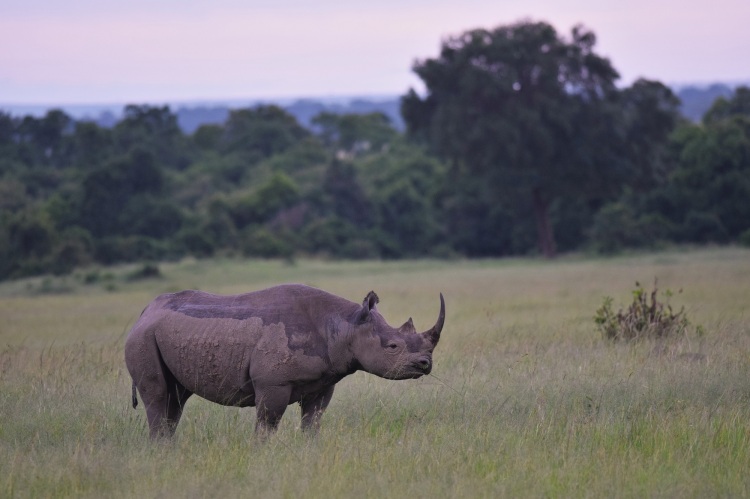
In addition to the rhino, a single male saddle-billed stork (black eye and yellow throat wattles) was soaking up the final warmth from the sun. This enormous stork is in my opinion, the most beautiful of the family. We made our way back to camp and enjoyed a perfectly cooked filet of beef, mashed potatoes, cream of mixed vegetable soup, and a delicious cheesecake for dinner. And yes, everything is hand-made and locally prepared by the chef in a bush kitchen run on solar.
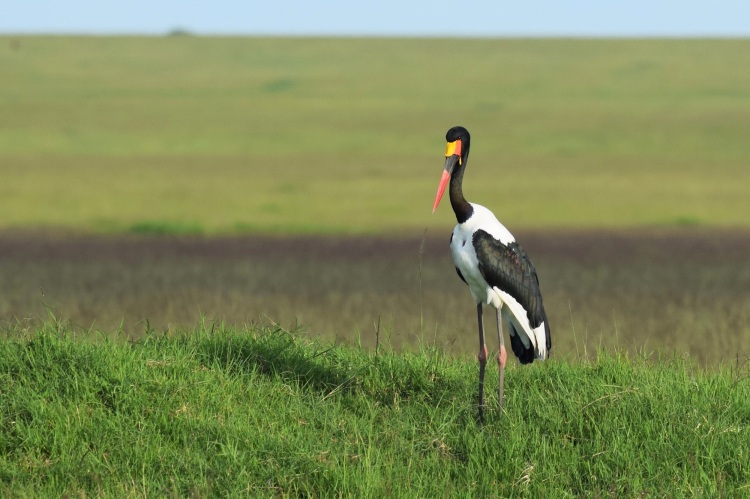
Male Saddle-Billed Stork (notice the brown eye and yellow throat wattles)
A 6:30am departure meant for an early wake-up on Christmas morning. I hadn’t been up that early since childhood when my sister and I enjoyed our stockings while mom and dad slept (quite the strategy I must admit). Still in the forest, we were treated to an incredibly soft sunrise due to fog which backlit a family of elephants as they slowly lumbered toward the marsh. Suddenly a troop of baboons in the canopy began screaming which in turn alarmed the elephants. Their stomping and trumpeting certainly got the blood pumping and keyed our guide onto the female leopard making her way back from the plains after an unsuccessful morning hunt.

The look in her eyes as she was forced to navigate through the elephants and beneath the baboons was intense to say the least. She was prowling and skulking through the shrubs and small trees so as to avoid confrontation. In open space, she was sprinting and dashing over fallen logs and gnarled branches to extricate herself from the situation.

Not a bad start especially considering that drives in, we’d booked the two most elusive members of the Big 5. For the rest of the morning we drove around the Musiara swamp/marsh and over to “bila shaka” which translates to “without a doubt.” This is guide speak for “you’ll find a lion.” And that we did. Though the single mature sleeping male was quite obscured by the thick bushes. Nonetheless, the drive back gave us multiple Jackson’s widowbirds, a cracking lilac-breasted roller, a small flying flock of European bee-eaters, a solitary bateleur, Ruppel’s griffon vultures, white-backed vultures, spur-winged lapwings, long-toed lapwings, blacksmith lapwings, and crowned lapwings, and a host of doves. The birding highlight was the male Narina trogon that posed brilliantly for photos.
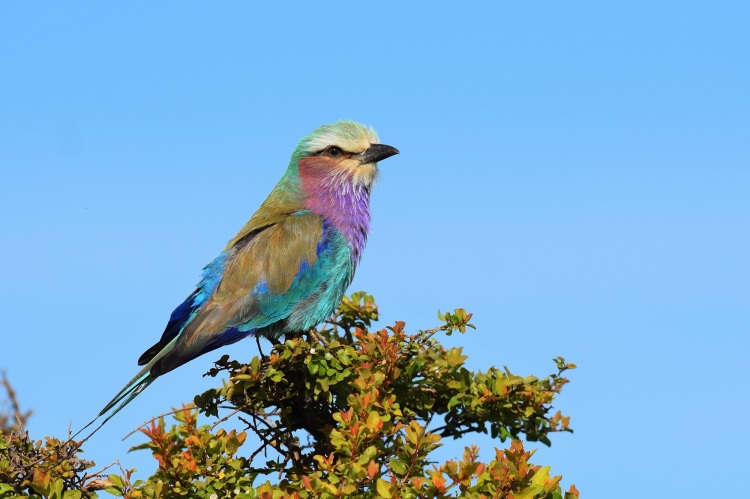
Lilac Breasted Roller
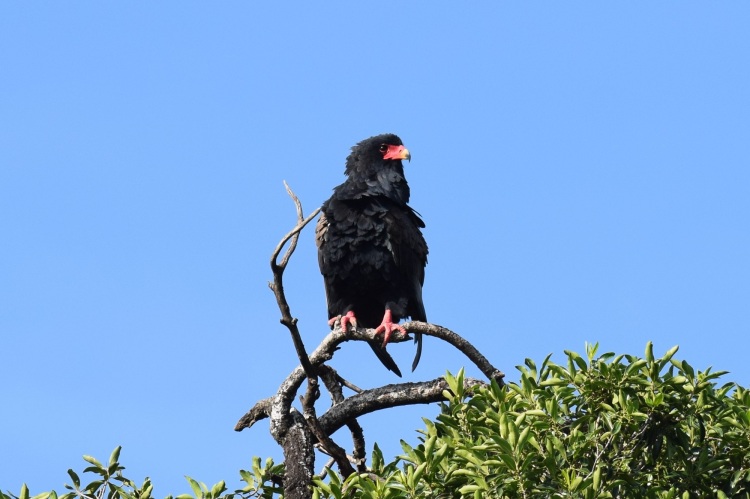
Bateleur
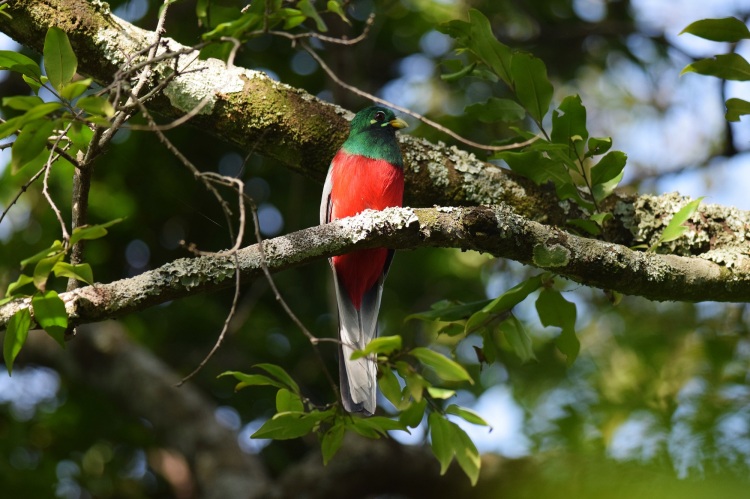
Narnia Trogon – fitting for Christmas
The late morning and early afternoon were spent opening presents and socializing with our friends. A branch from an acacia that was knocked down by elephants made for the perfect (and locally appropriate) Charlie Brown tree.
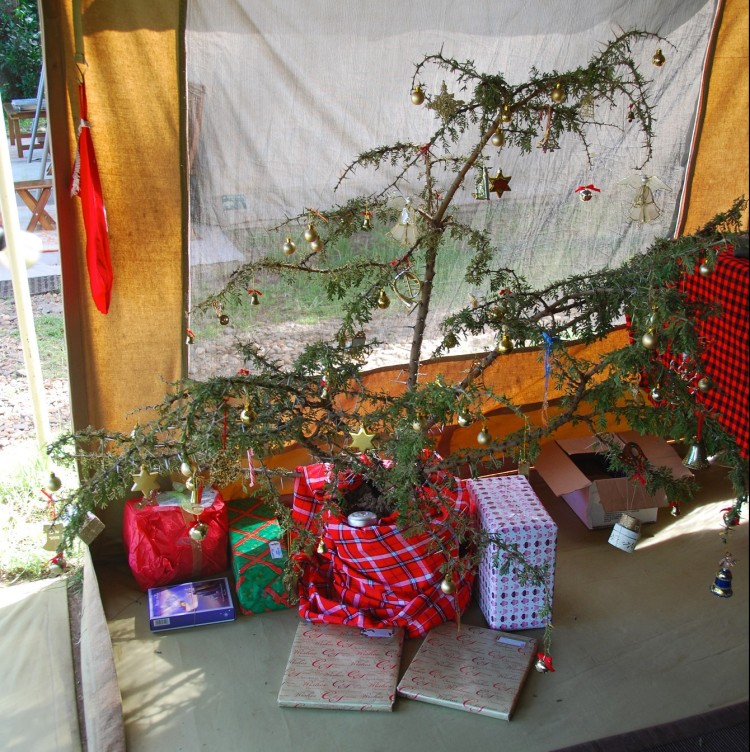
The evening drive was once again highlighted by two previous acquaintances: the female leopard and the saddle-billed stork. But these experiences were much fuller. We spent over an hour with the leopard and her two cubs as they struggled to climb a steep cliff on the Mara river. One cub was significantly stronger than the other meaning that she could scale the softer section. However the little brother was too weak to make the climb. As it decided to remain in the bushes at the rivers edge, mom and sister started to walk off.
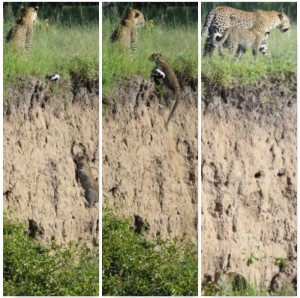
Out of nowhere a large male baboon spotted mom and chased her off. Thankfully it did not spot the cub as he would have dispatched it out of territorial protection. It was a tense few minutes as the mother was gone and the lone cub trying to make its way back down the embankment without alerting any other baboons. Finally reunited with her brother, the two waited for their mother’s return while exploring and playing on the cliff. Mom eventually returned and both cubs were able to make their way to her. Once this scene ended we went over to the pools at the marsh and found our male saddle-billed stork in the company of a female. They casually went about their business seeking out frogs and small lizards.
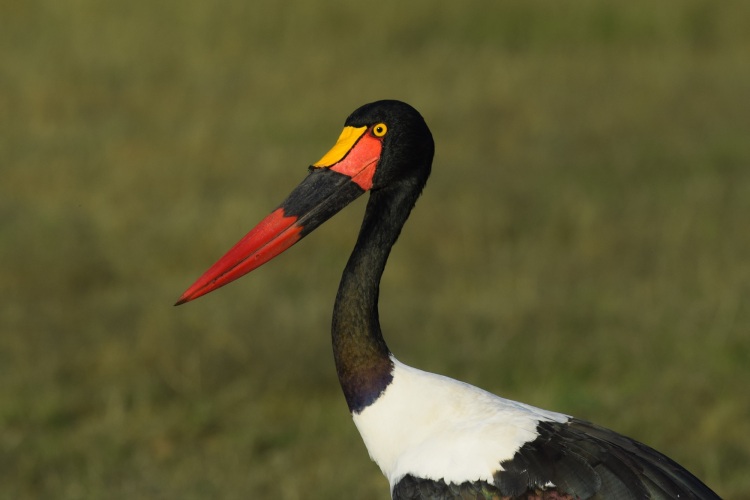
Female Saddle-Billed Stork (notice the yellow eye)
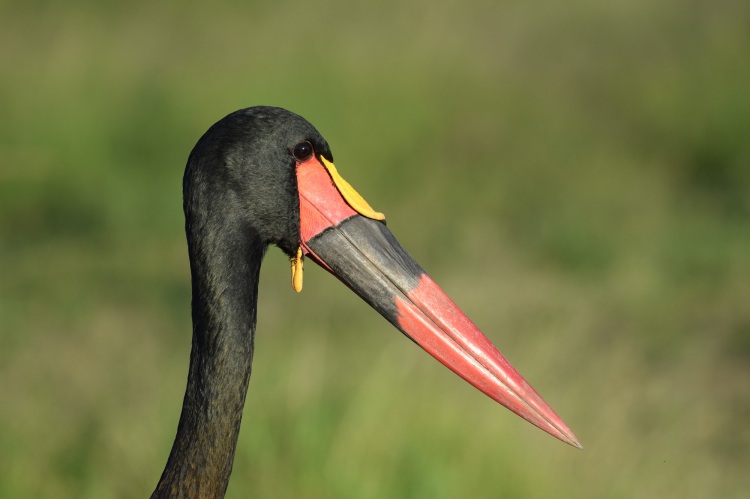
Male Saddle-Billed Stork (Can you see the difference?)
The marsh was covered in elephants. This is not an understatement. Over two-hundred individuals from multiple herds staked out different sections of the wetland. It was a site to behold.
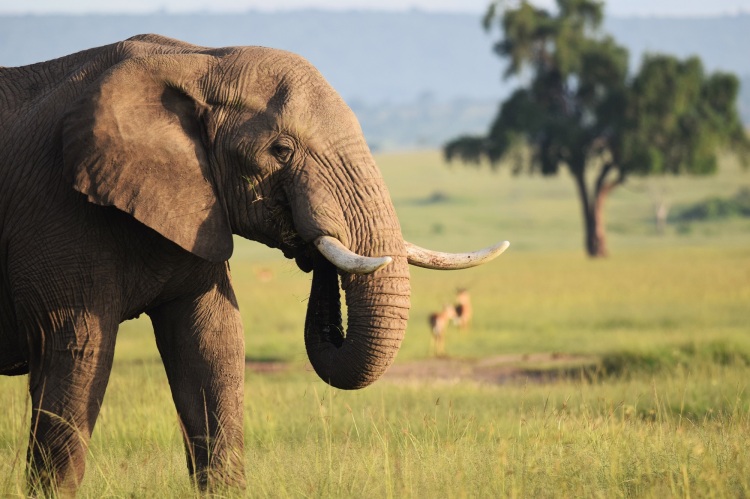
One massive female was collared and her tusks were the largest we’d ever seen. Our guide Dominic informed us that she is very well known and loved by the Maasai for her gentle temperament. We can only hope that she stays safe and that the park rangers do their jobs to protect her from poaching. Tonight dinner was a Christmas feast with turkey, ham, stuffing, mixed vegetables, and the British favorite Christmas pudding (of which I am not a fan). We relaxed around the camp fire and shared stories of adventure, family, and wilderness experiences. It was a rich and fulfilling evening that was topped off with a glass of 12-year aged Scotch whiskey.
Another early morning found us up and loaded into the Landy before sunrise. Once again a beautiful sunrise was the beginning to the day. The grassland was cast in a light morning fog which made for dreamy photos.
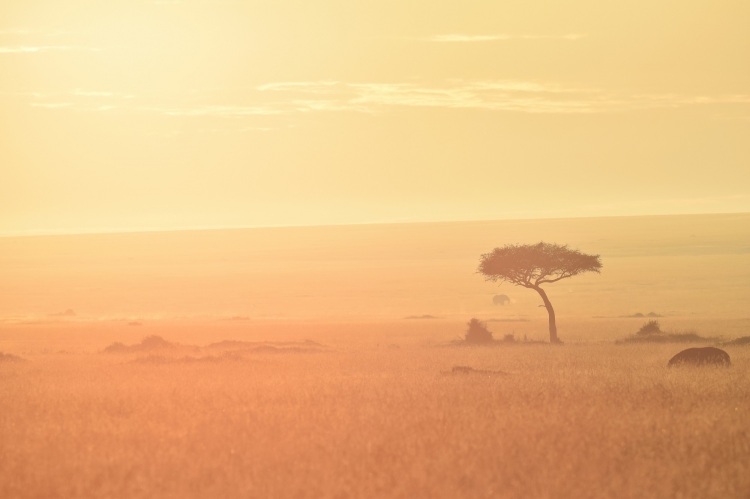
The north west corner of the Mara is renowned for its marsh pride of roughly 40 lions. Surprisingly after three drives, we’d only encountered one sleeping male whose face was mostly obscured. For Dominic, this simply would not due. He was bound to put us onto the regal cats. He decided to give three different zones a go starting with the boarder to paradise plains. Here we found 3 females a very long ways away and due to the recent rains, reaching them was impossible. Instead we took 30 minutes to oblige my birding interests and we found a lappet-faced vulture hanging out with about seven superb starlings and a lilac-breasted roller. It was certainly interesting company.
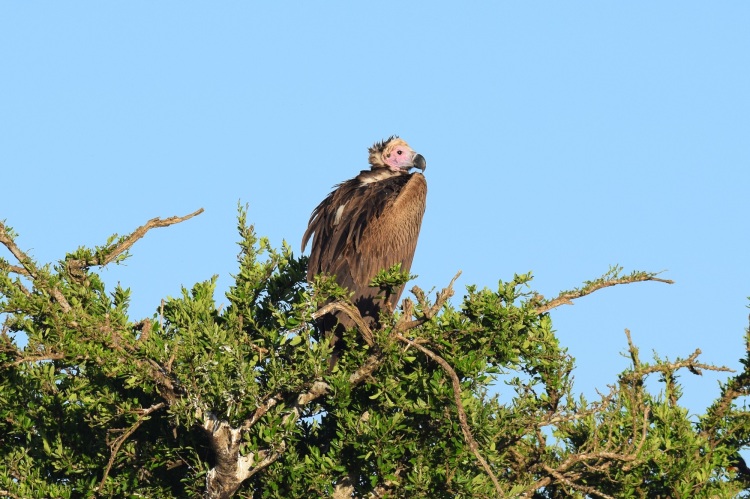
Lappet-Faced Vulture
The lappet faced is the largest vulture in East Africa and uses its size to push other carrion feeders off kills. That being said, their lack of aggression usually makes them number 2 in the pecking order behind only the Ruppel’s griffons who are scrappy, assertive, and ill-tempered. In numbers, they will pester a lappet-faced enough to make it move off a bit until the Ruppel’s have had their fill. Satisfied with our experience we made our way back toward Bila Shaka but not before my wife spotted a stunning rosy-breasted longclaw. This was a lifer for me and to get one in full blush was quite special. The morning light made for quite nice photos.
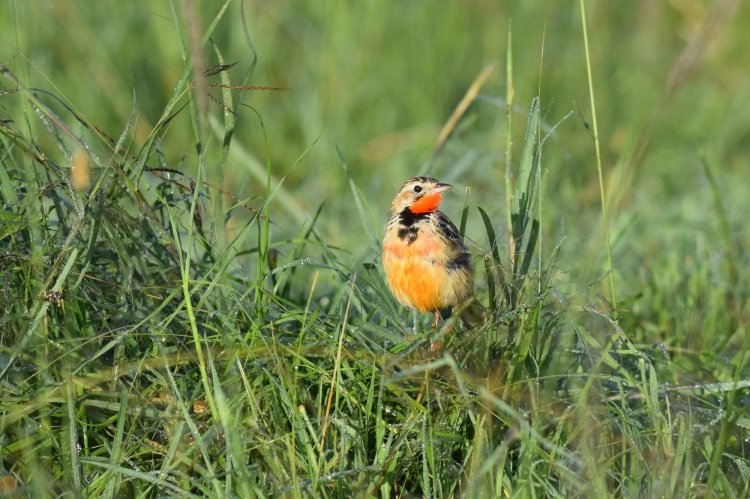
Rosy-Breasted Longclaw
After a brief moment we slowly trudged through the muck in the company of a very noisy hammerkop and the ever present rufous-naped larks. But finally, just to the east of BS, we found a group of four lions: three females and a big black-maned male who is known as Lipstick due to a growth above his lips and below his nose.
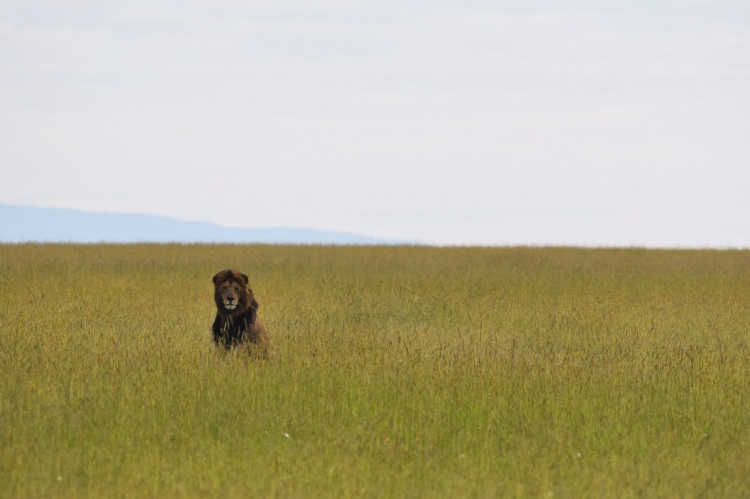
For a few tense minutes it looked as if they would hunt for warthogs but with a shift in the wind, the warthogs caught on and high-tailed it out of there (literally). Succumbing to our own hunger we moved off and found a safe place to disembark from the vehicle. A breakfast of pancakes, bacon, yogurt, handmade granola with dried mango and pineapple, juice, and tea really hit the spot. As we finished, a kori bustard walked passed us not more than 15 meters away. This bizarre bird is the continent’s heaviest flier weighing up to 19 kilos.
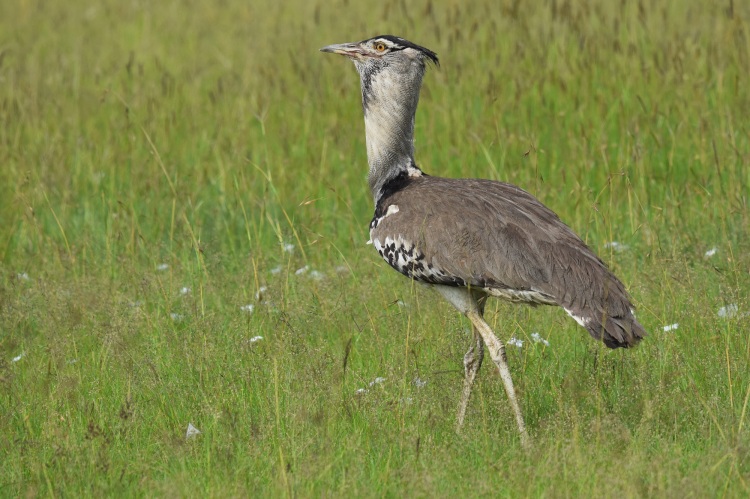
Kori Bustard
With the sun reaching new heights, we made the decision to head back to the forest for a relaxing mid-day. On the way we encountered more elephants, a herd of 500 buffalo, a few distant ostrich, and the pair of saddle-billed storks on their nest. Another nap, a game of Settler’s of Catan, fruitless beckoning of the Schalow’s turaco, and a lunch of salad and sandwiches was quite restorative and by 4:30 our Nikons were ready for more action.
The wife and 5 year old son of other family with us (besides the owners) had not yet seen lions. So for the evening drive we made our way back over to BS. The rains ended three days before our arrival and the immense amounts of water being shed down to the marsh moved the lions to the drier extents of their ranges. So rather than a five minute trip to see dozens from the pride, we needed 35 minutes to reach them. Honestly, this was no big deal in my book. Unfortunately for the other family, we only found a single female resting on the top of a mound. But with our timing at sunset, she made for nice photography. I decided to put down the camera and just soak it all in. On the way out we’d already seen my highlight: a family of ostrich comprised of one male, four females, and about 15 juveniles of varying size. This was quite unique as lion territory is not the best for so many young ostriches.

Male Ostrich with Juvenile Chicks
With the tall grass the adults would not be able to protect everyone. Of course, just for good measure, right before reaching camp our female leopard was resting on the top of fallen log bidding us good night’s sleep.

But before we could fully retire we had to suffer through a candle-lit forest supper of roast leg of lamb, spring vegetables, fresh baked rolls, and a decadent chocolate mousse. Another nightcap by the fire made for the perfect close to another day in the Masai Mara.
Having experienced such good game viewing we decided that our third morning drive was to be more relaxed. There would be no targets. As Dominic put it, “we’ll see what nature brings us.” This will go down as perhaps the best game drive I’ve experienced. I’ll come out and say that we did not see the Big 5. We did not encounter a cheetah. There was no take-down. To be honest, the animals were not that special.
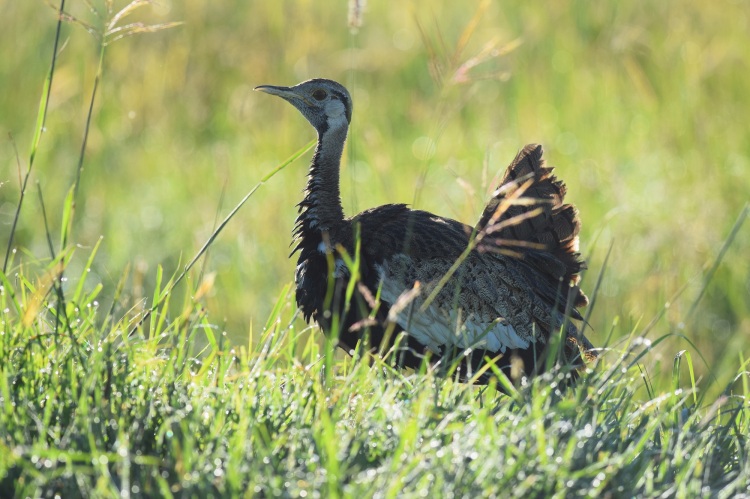
Black Bellied Bustard (owner of the most comical bird call)
Instead this felt like quintessential Africa to me. We spent hours driving through the hilly plains, crossing small creeks, and utilizing tiny tracks that may have been unused for months. There was not another vehicle in sight. In fact on the entire drive we only encountered two vehicles and this was after we spotted two of the four brothers who rule the Marsh Pride. Our behavior of sitting and pointing our cameras down to the ground indicated to a two-Landy group that we’d found something and they eventually made their way over. In the meantime we had about ten minutes alone with the king. As we departed we took in more breathtaking scenery of rolling hills dotted with trees, the meandering Mara river, and scattered groups of game including giraffe, buffalo, topi, gazelle, and antelope. On this drive we did encounter something very rare. And when I say rare I mean it. Our guide has seen this animal twice in his life: the aardwolf.

It’s a member of the hyena family but does not scavenge. Nor does it eat meat for that matter. It is an insectivore that specializes in termites. According to Dominic, when this animal is spotted it is usually far away, deep in the tall grass, and fleeting at best. For us, the animal paused for a good 30 seconds, faced us, sniffed the air, and then disappeared. Not much of a viewing, but certainly more than a glimpse. Frustratingly more Schalow’s turacos were heard calling from the forest but none were willing to come out and play. We were treated to another lifer for me: the white headed vulture whose pink head with a red and blue beak is really quite beautiful.
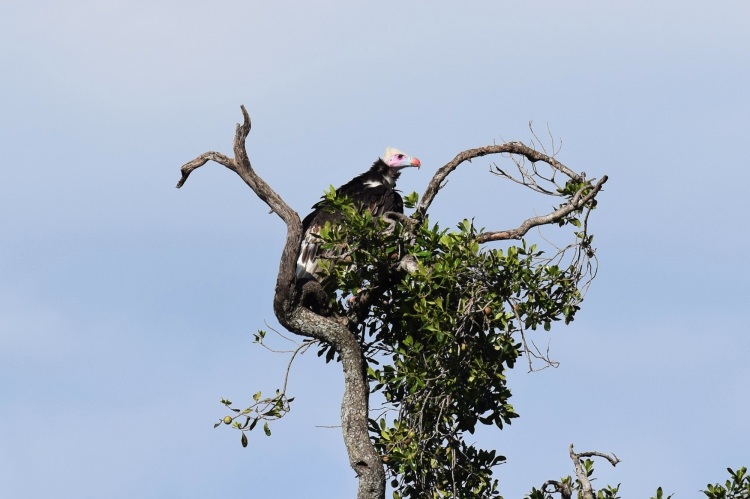
White Headed Vulture
As we returned to camp Dominic said he wanted to see if the leopard was back near the cliffs where we saw it on Christmas. As we rounded a corner there was no leopard to be found. Instead a bush breakfast was set for us overlooking the river.
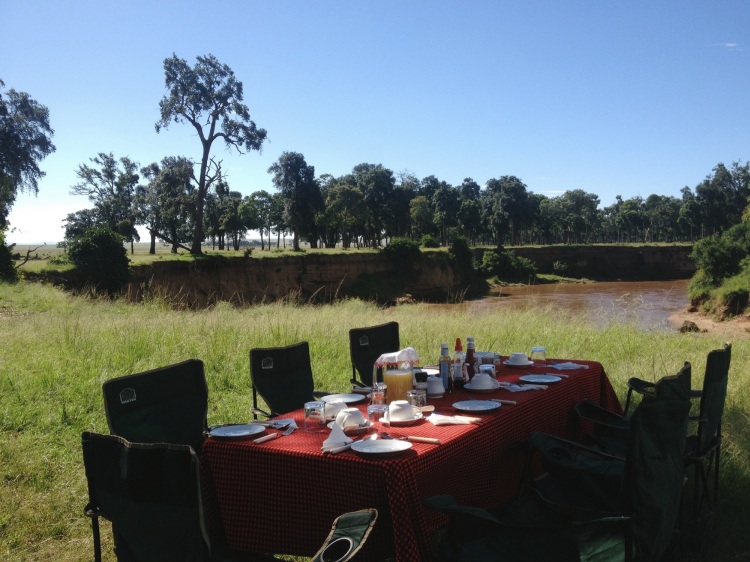
We dined on eggs, toast, pancakes, bacon, coffee, tea, fruit, and more while listening to the sound of moving water and once again sharing stories of past adventures. Little bee-eaters were zipping around us, white backed vultures watched to see if one of us would keel-over, and African fish eagles were calling loudly around the bend. Stuffed and tired I collapsed onto the bed for a great nap, awoke in time for light and refreshing lunch, scrolled through trip photos, and talked with the owners for a while.
Before long it was time for our final evening drive and a quick moving storm had us weary of the time. We made our way to the ponds where we found African green pigeons, a malachite kingfisher, African fish eagles, African open-billed storks, woolly necked storks, glossy blue-eared and Ruppel’s long tailed starlings, grey kestrels, a tawny eagle, a white-browed coucal, fulvous ducks, and a couple of hippos. Once more we went to Bila Shaka in search of a male lion for those who were yet to see one.
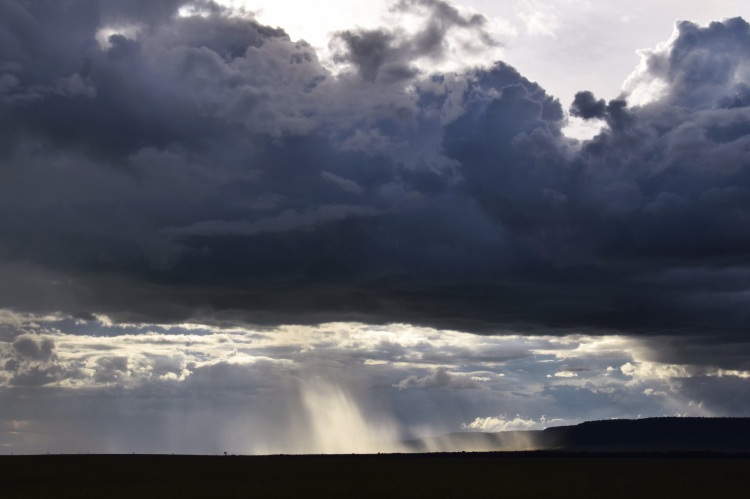
We had no luck but as we rolled back to the forest our friendly leopard had left her cubs to play on a fallen tree at the forest edge. The scene was busy. That’s an understatement. There were at least 20 vehicles preset all jockeying for position. The young cubs were resting a bit out of sight and after a while, with the light fading due to the storms to the south west, we called it a game-drive. Our final dinner was the bees’ knees. Seared red snapped with a lemon sauce, sautéed vegetables, and something called a banofee (a banana toffee) for dessert was a perfect final dinner. We went to be early very tired from the day and with a twinge of sadness that tomorrow we’d be leaving the Mara.

All of us awoke early with one thing on our mind (well two things): the cubs from the night before. We were told that they’d probably be in the same area because their mother would not risk moving them at night due to the lions and hyenas. We left by 6:15 and booked it to the same fallen tree. As we approached, a vehicle told us that the cub had moved into the thick brush and was gone. We were a bit confused. Having learned some Kiswahili, we knew that the guide said cub: singular. Yet we knew there were two. We skeptically went to the tree.
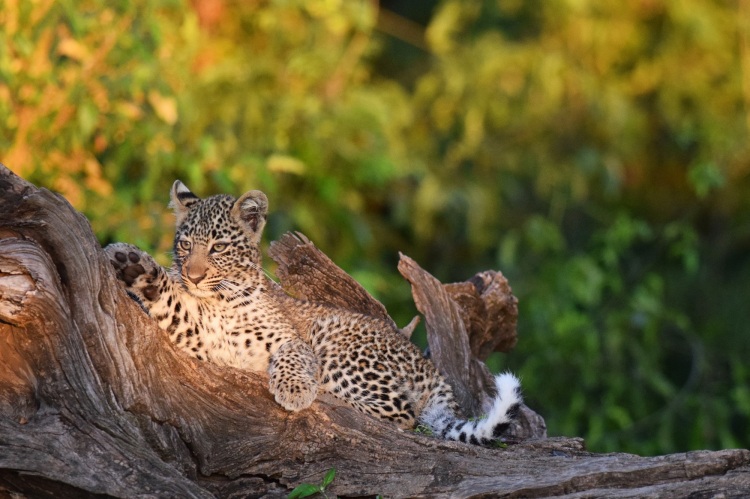
The smaller brother immediately hopped us onto the trunk and walked along it and until plopping down. Suddenly something in a tree caught his interest and he decided to explore.
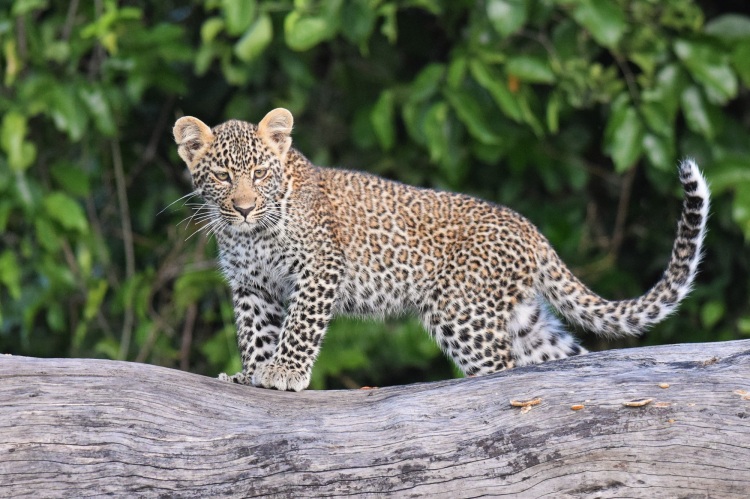
He sauntered across the fallen wood, stared into the tree and jumped. A good climb found him in the canopy looking across the way to his bigger sister who was in an adjacent tree. The most amazing part: we were completely alone!
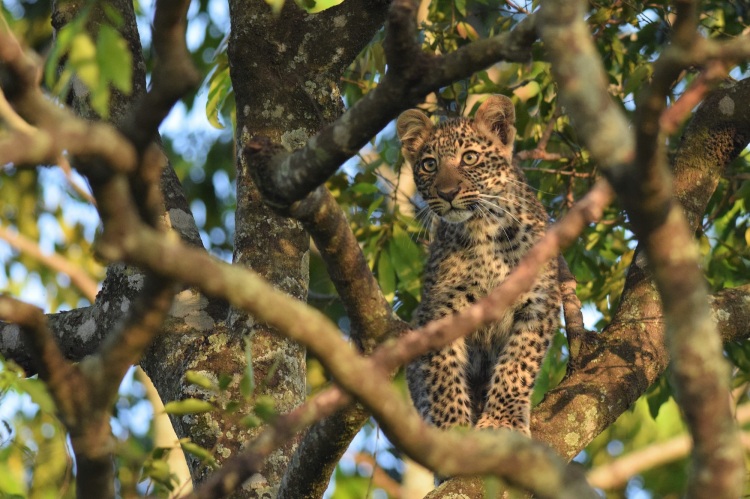
Finally another vehicle joined us, then one more and things began to heat up. A family of elephants caught onto the leopards and not liking to share space, they drove them off while trumpeting and trampling the bush. Quite a fitting way to end our safari. On the drive out of the park and into the conservancy, I recorded one more lifer, a black stork.
